1. Introduction of ABAQUS Subroutine Examples
When you want to run a problem in ABAQUS, you commonly use the software’s graphical interface. However, there are instances when the standard procedures fall short in addressing complex issues, whether due to specific equations or problem intricacies. In such cases, ABAQUS provides a solution through its coding platform, offering an Abaqus Fortran subroutine example. This Abaqus subroutine practical feature allows users to customize and extend the software’s capabilities. In this post, some Abaqus subroutine examples are introduced, and some of Abaqus subroutine applications are presented. If you want to learn how to write your own subroutines and try them out, you can join our free ABAQUS course. We take pride in being your CAE Assistant.
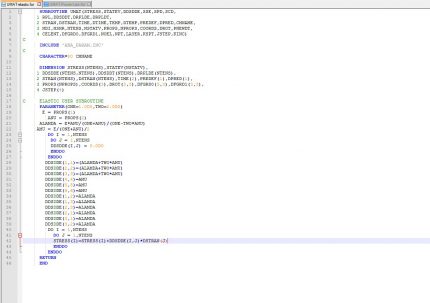
2. 10 Important Abaqus Fortran Subroutine Examples
| The ABAQUS software has many subroutines for different problems. For example, if you want to define a mechanical user-defined distributed load, you have to use the DLOAD subroutine; if you need a user-defined boundary condition, use the DISP subroutine; sometimes, you need a user-defined material behavior, so apply the UMAT subroutine and, etc.
For further guidance, you can find Abaqus Fortran subroutine examples and their applications below. |
Note that both ABAQUS solvers, standard and explicit, are in FORTRAN. To connect with any of the solvers and define functions, you have to use FORTRAN.
The subroutines are applicable in many industries and topics, such as aerospace, military, composite structures, materials science, fracture mechanics, etc.
In this article, we will explore ten important ABAQUS subroutine practical applications:
1) UMAT & VUMAT
2) USDFLD & VUSDFLD
3) DLOAD & VDLOAD
4) UHYPER
5) UEL & VUEL
6) FRIC & VFRIC
7) UMESHMOTION
8) HETVAL
9) DFLUX
10) DISP & VDISP
After introducing each ABAQUS subroutine, we provide several articles as ABAQUS subroutine examples to familiarize you with their applications in various industries and scientific fields. These articles are chosen based on five reasons:
1. They are for the last 12 years (mostly the last 5 years).
2. They have a significant number of citations.
3. Most applicable in industries.
4. They have great potential in their content.
5. Almost all of them are highly ranked.
Read More: Abaqus student tutorial
3. UMAT & VUMAT | Abaqus Subroutine Practical
UMAT, short for user-defined material, is a vital ABAQUS subroutine practical for inputting material constants to create custom mechanical models. Also, it is used for user-defined thermal material models (UMATHT). This subroutine uses Cauchy stress components (i.e., true stress). The UMAT is for the ABAQUS standard solver, and the VUMAT subroutine is for ABAQUS explicit solver. These subroutines can be used to:
· Define a material mechanical constitutive behavior
· call at all material calculation points of elements for which the material definition includes a user-defined material behavior;
· Define any procedure that contains mechanical behavior;
If you’re interested in learning how to write UMAT subroutines, you’re welcome to join our free ABAQUS course. Now let’s take a look at some ABAQUS subroutine examples for UMAT and VUMAT.
3.1. Abaqus subroutine applications :UMAT & VUMAT
Here are some ABAQUS subroutine practical applications for UMAT.
3.1.1. Analyzing Asphalt Pavement
In 2017, the National Natural Science Foundation of China-funded research to investigate asphalt pavement rutting behavior using the ABAQUS subroutine. The UMAT subroutine was developed to learn the asphalt mixture property and analyze asphalt pavement rutting behavior.
3.1.2. Carbon/Kevlar Hybrid Composite
Ministry of Higher Education Malaysia funded an article in 2020 to research thermal stress prediction of carbon/Kevlar hybrid composite in laser cutting. The researchers modeled the problem in ABAQUS software and used the VUMAT subroutine. The subroutine is used to control material removal during the laser cutting procedure.
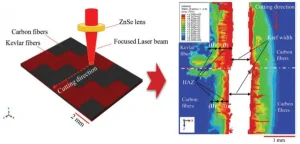
3.1.3. Strength Prediction of Composite
Composite structures have broad applications in many industries, such as aviation and the military.
Postdoctoral Science Foundation of Jiangsu Province developed an article in 2017 explaining how to model a 3D braided composite by using the ABAQUS subroutine to predict the composite stiffness and strength. The VUMAT subroutine did the damage simulation and composite modeling.
Figure 3 3D braided composite in ABAQUS modeled by VUMAT subroutine [Ref]
3.1.4. Composite Tidal Current Turbine
Nowadays, the energy demand is growing, and considering global warming, recyclable energy is getting more interesting every day in the whole world, such as renewable marine energy.
There is an Abaqus Fortran subroutine example in the composite industry In 2020: The Laboratory for Renewable Energy and Dynamic Systems of Morocco published research about environmental exposure effects on the composite tidal current turbine mechanical properties. The investigators used the ABAQUS subroutine to simulate and observe the behavior of the composite under static and dynamic loading. The VUMAT subroutine modeled the damage based on Hashin criteria for intralaminar damage.
Figure 4: A tidal current turbine
Figure 5 Nozzle damage zones with and without spars [Ref]
3.1.5. Functionally Graded Materials (FGM)
As you may know, FGM materials have been one of the most important and applicable materials in the past few years. It is used in many industries such as aerospace, nuclear energy, optics, biology, etc.
In 2019, Tunisia’s Engineering Production Mechanics and Materials Unit did a geometrically nonlinear analysis of the FGM elastoplastic behavior. The investigators modeled the FGM with the ABAQUS subroutine. The UMAT subroutine defined the FGM material properties.
Figure 6 Nature examples of FGM; a) Bamboo stalks, b) Bone, c) Human skin [Ref]
Figure 7 FGM hyperboloid deformed shape [Ref]
These were some Abaqus subroutine examples for UMAT and If your work is related to the UMAT subroutine and you do not know how to start writing your UMAT subroutine, you can get complete and comprehensive information about UMAT in the below package.
 |
⭐⭐⭐ Abaqus Course | ⏰10 hours Video 👩🎓+1000 Students ♾️ Lifetime Access
✅ Module by Module Training ✅ Standard/Explicit Analyses Tutorial ✅ Subroutines (UMAT) Training … ✅ Python Scripting Lesson & Examples |
I hope you enjoyed the mentioned applications of the UMAT subroutine; keep going reading to know more about Abaqus subroutine applications.
Read More: Start Writing an Abaqus Subroutine : Basics & Recommendations
4. USDFLD & VUSDFLD: Are these Two Abaqus Subroutine Practical?
User-defined field (USDFLD: standard solver, VUSDFLD: explicit solver) subroutine allow you to redefine field variables values at a material point within an increment. In other words, you can define field variables as a function of time at any available material point. (Abaqus subroutine applications)
4.1. Multiple Applications of USDFLD & VUSDFLD | Abaqus subroutine Applications
Here are some ABAQUS subroutine practical applications for USDFLD & VUSDFLD.
4.1.1. Additive Manufacturing (3D Printing)
In 2019, Alexandria university of Egypt disseminated an article about 3D printing. This article talks about the effects of laser scanning speed on part distortion. The finite element modeling of this part is implemented with the help of the USDFLD subroutine, which serves as an Abaqus Fortran subroutine example, simulating the phase change from powder to solid-state.
Figure 8 Nodal Temperature (NT11) distribution, deposition of the first layer [Ref]
4.1.2. Bolted Joints Used in Aircraft
Xi’an Aircraft Industry of china worked on CFRP/Ti bolted joints in 2018, which are increasingly used in aircraft structures. An experimental and numerical investigation was made to find the effects of interference sizes and clearance on the failure and damage of CFRP/Ti bolted joints. The researchers used the ABAQUS USDFLD subroutine to simulate material stiffness degradation and failure analysis in the loading process.
Figure 9 Finite element model of the CFRP/Ti joint [Ref]
4.1.3. Failure Prediction of Composite
In 2012, Spanish Comisión Interministerial de Ciencia y Tecnología funded an article about failure prediction of composite joints. The investigators modeled progressive damage with the help of the ABAQUS/standard USDFLD subroutine to predict the influence of tightening torque and secondary bending on the composite joints. The material properties became a direct function of predefined field variables through the USDFLD subroutine.
Figure 10 Composite joint model mesh [Ref]
4.1.4. High-Speed Machining
High-speed machining is one of the most critical and helpful chipping processes in manufacturing industries.
The national natural science foundation of china published an investigation in 2016. It worked on the evolution of micro-hardness and grain size during high-speed machining with the help of the ABAQUS subroutine example. The VUSDFLD subroutine was developed based on Zener-Hollomon and Hall-Petch to simulate the grain size modifications and micro-hardness in a machined surface generation. Also, it was used to investigate chip formation under different cutting speeds.
Figure 11 Simulated chip shape under different cutting conditions [Ref]
If your work is related to the USDFLD subroutine and you do not know how to start writing your USDFLD subroutine, you can get complete and comprehensive information about USDFLD in the below package.
5. DLOAD and VDLOAD Subroutines
The DLOAD and VDLOAD subroutines are used for user-defined distributed load. The former is for the standard solver, and the latter is for the explicit solver. They can define the distributed load magnitude variation as a function of time, load integration point number, position, element number, etc. |Abaqus subroutine applications
Figure 12 DLOAD subroutine, a moving pressure
5.1. Where are DLOAD & VDLOAD Applications?
Here are some ABAQUS subroutine practical applications for DLOAD & VDLOAD.
5.1.1. Asphalt Concrete Pavements
In 2017, the USA Michigan State University developed research to detect a bottom-up crack in the asphalt concrete pavements. The researchers used the DLOAD subroutine to simulate a dynamic moving load on the pavement surface
Figure 13 (a) The 3D model of the pavement structure, (b) meshed cross-section of the asphalt concrete layer [Ref]
5.1.2. Wind Turbine Blades
Wind energy is one of the most important and promising renewable energy sources. Having wind energy requires wind turbines, so like other apparatuses, this one also needs maintenance.
In 2020, an investigation was published by Morocco Laboratory for Renewable Energy and Dynamic Systems. The research goal was to identify and predict critical zones sensitive to failure and damage with the help of the ABAQUS subroutine. The DLOAD subroutine was used as an Abaqus Fortran subroutine example to model the pressure load variation with position.
Figure 14 wind turbine
Figure 15 Displacement (mm) at the tip of the blades with glass fibers (left) and carbon fibers (right)[Ref]
5.1.3. Multi-layered Metallic Plates
In 2019, Texas State University of USA worked on the repeated localized impulsive loading effects on the performance of multi-layered metallic plates by simulating the problem with the ABAQUS subroutine. The VDLOAD subroutine was used to simulate the structure dynamic plastic response and predict the failure modes and deformation profiles of monolithic and multi-layered configurations. It would be a good Abaqus subroutine applications.
Figure 16 Loading zone, boundary condition, mesh generation, and dimension for a typical multi-layered plate [Ref]
Are you working on the practical Abaqus subroutine for DLOAD and not sure how to start? You can find an Abaqus subroutine practical example for DLOAD in the package below.
6. UHYPER Subroutine
To define a user-defined hyperelastic material behavior, the UHYPER subroutine can be used. Also, it can define the strain energy potential for isotropic hyperelastic material behavior
Figure 17 Definition of hyperelastic in a graph
6.1. Several Applications of the UHYPER Subroutine and its Abaqus Subroutine Example
Here are some ABAQUS subroutine practical applications for UHYPER.
6.1.1. Hydrogels
Hydrogels are used for hygiene products, producing contact lenses, wound dressing, etc. hydrogels are used in tissue engineering and drug delivery as well.
In 2016, the A*STAR Institute of High-Performance Computing (IHPC) supported research that worked on the deformation characteristics of a temperature-sensitive hydrogel. The institute did an analysis with the ABAQUS subroutines UHYPER and UMAT to get some results. They used the UHYPER subroutine to determine the mechanical behavior of the temperature-sensitive gel.

6.1.2. Circular Cylinders
Circular cylinders have many applications almost in all industries, such as military, aerospace, construction, etc.
In 2019, the University of Texas at Arlington presented research. They developed a finite element analysis with the ABAQUS subroutines UHYPER and VUMAT to investigate the nonlinear incompressible isotropic elastic solid circular cylinder response under combined torsion and extension. The UHYPER subroutine defined the hyperelastic materials for the invariant-based exp-exp constitutive model in this research.
6.1.3. Salt Concentration-sensitive Hydrogel
Salt concentration-sensitive hydrogel is a material that has novel applications in mechanical engineering, and it is widespread in nature.
In 2019, the International Center for Applied Mechanics of China developed a finite element model with the ABAQUS software and UHYPER subroutine to predict the Salt concentration-sensitive hydrogel deformation behavior.
Figure 20: Hyperelastic circular cylinder under extension-torsion loading with mesh network [Ref]
Figure 21 Deformation behavior of the salt, experiment, and the simulation [Ref]
Are you working on the Uhyper subroutine, and you do not know how to start writing your Uhyper subroutine? You can get complete and comprehensive information about Uhyper in the below package.
7. UEL & VUEL Subroutine
When you want to define various element shape functions, UEL would be your choice. UEL stands for user-defined element. The V version (VUEL) is for the explicit solver like the previous sections. Note that this subroutine is for advanced users only because even for the simplest examples, it requires considerable coding by the user.
When you use the UEL subroutine, it will be called for each element of a general user-defined element type. Each time element calculation is required appropriate to the current activity in the analysis.
7.1. Several Applications for UEL & VUEL
7.1.1. Linking CAD with ABAQUS
Isogeometric analysis applications in the industry suffer from a lack of automatic or semi-automatic software platforms.
Department of Mechanical Engineering of the Carnegie Mellon University of USA developed research in 2017 to integrate ABAQUS with CAD to present a platform to overcome the mentioned issue. They worked on this issue with the advantages of the ABAQUS user-defined element (UEL) and other matters.
Figure 22: An example of linear elasticity analysis [Ref]
7.1.2. Heterogeneous Solids and Porous Saterials
In the year 2018 Institute of General Mechanics, RWTH Aachen University of Germany, investigated on a brittle fracture model of heterogeneous solids and porous materials with the help of the ABAQUS UEL subroutine. The subroutine was developed to model the Phase-field modeling (PFM) and Theory of Porous Media (TPM) for brittle fracture simulation.
Figure 23 From a spatially homogeneous to a statistically heterogeneous via Weibull distribution in ABAQUS UEL [Ref]
7.1.3. Nanocomposites Materials
Division of Computational Mechanics of Ton Duc Thang University published an investigation in 2016 that can predict clay/epoxy nanocomposites’ tensile strength with the help of the ABAQUS subroutines UEL and UMAT. The UEL subroutine modeled a phase-field model for brittle fracture simulation.
Figure 24 3D representative volume element (RVE) of the polymeric nanocomposite (PNC)[Ref]
7.1.4. Elasto-Plastic Solids
In 2019, The University of Technology Sydney (UTS) supported research explaining phase-field fracture in elastoplastic solids, implemented by the ABAQUS UEL and UMAT subroutine. The UEL subroutine is used for the phase-field fracture.
Figure 25: Crack propagation of the flat grooved specimen [Ref]
Do you want to define User-defined elements, and you do not know how to start writing your UEL subroutine? You can get complete and comprehensive information about UEL in the below package. We’re delighted to be your CAE Assistant.
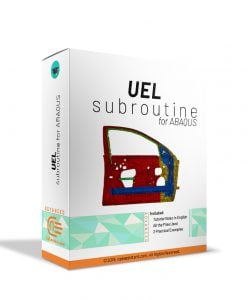 |
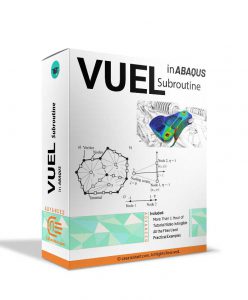 |
We’ve made an effort to list Abaqus subroutine applications. We are enthusiastic about receiving your feedback. Please feel free to share any comments or questions with us. Your input will bring us one step closer to achieving our goal of becoming your ultimate CAE assistant. You can continue reading this topic in the following article 10 Useful ABAQUS Fortran Subroutine Example (Part2).
Get this article as a PDF file: CAE Assistant – Abaqus Subroutine Practical examples
8. Frequent asked questions
What are the Examples of utilizing the UMAT subroutine in ABAQUS?
UMAT subroutine in ABAQUS is widely used for different applications, including:
- Analyzing Asphalt Pavement: Used to study asphalt properties and assess rutting behavior.
- Carbon/Kevlar Hybrid Composite: Employed for thermal stress prediction in composite laser cutting.
- Strength Prediction of Composites: Enables modeling of 3D braided composites, predicting their strength and damage behavior.
- Composite Tidal Current Turbines: Utilized to analyze mechanical properties under environmental exposure.
- Functionally Graded Materials (FGM): Helps define material properties for FGMs in various industries.
What are the Real project applications of USDFLD & VUSDFLD?
USDFLD and VUSDFLD in ABAQUS have practical applications in real projects:
- Additive Manufacturing (3D Printing): Used for simulating phase changes in 3D printing due to laser scanning speed.
- Bolted Joints in Aircraft: Investigated the effects of interference sizes and clearance on aircraft bolted joints, analyzing material stiffness and failure.
- Failure Prediction of Composite Joints: Predicted failure in composite joints by modeling progressive damage and evaluating factors like tightening torque and secondary bending.
- High-Speed Machining: Studied micro-hardness and grain size evolution during high-speed machining, including simulating grain size modifications and chip formation under different cutting speeds.
Where are DLOAD & VDLOAD applications in the real world?
DLOAD and VDLOAD in ABAQUS are utilized in practical applications in the real world:
- Asphalt Concrete Pavements: Used for simulating dynamic loads on pavement surfaces, aiding in the detection of cracks and structural analysis.
- Wind Turbine Blades: Applied to identify critical areas susceptible to damage in wind turbine blades, modeling pressure load variations.
- Multi-Layered Metallic Plates: Utilized to predict failure modes and deformation profiles in multi-layered metallic plates subjected to repeated localized impulsive loading.
Where are the Practical applications of the UHYPER subroutine?
- Hydrogels: These adaptable materials find uses in contact lenses, wound dressings, and tissue engineering. In 2016, an Institute of High-Performance Computing utilized ABAQUS subroutines UHYPER and UMAT to analyze the mechanical properties of temperature-sensitive hydrogels.
- Circular Cylinders: With applications spanning military, aerospace, and construction, circular cylinders are vital components. In 2019, the University of Texas at Arlington conducted research using ABAQUS subroutines UHYPER and VUMAT to investigate the behavior of incompressible elastic solid circular cylinders under various loads.
- Salt Concentration-Sensitive Hydrogel: This innovative material with applications in mechanical engineering was studied in 2019 by the International Center for Applied Mechanics of China. They employed ABAQUS and the UHYPER subroutine to predict the deformation behavior of salt concentration-sensitive hydrogels.
What are the practical applications for UEL & VUEL subroutines?
- CAD Integration: In 2017, Carnegie Mellon University in the USA bridged the gap between Computer-Aided Design (CAD) and ABAQUS. They utilized the ABAQUS UEL subroutine to streamline isogeometric analysis by creating an integrated platform.
- Heterogeneous Materials: In 2018, RWTH Aachen University in Germany employed the ABAQUS UEL subroutine to model brittle fracture in heterogeneous solids and porous materials. This advanced the understanding of Phase-field modeling and the Theory of Porous Media.
- Nanocomposite Strength: Researchers at Ton Duc Thang University investigated the tensile strength of clay/epoxy nanocomposites in 2016. The UEL subroutine was used to create a phase-field model for simulating brittle fracture.
- Elasto-Plastic Solids: In 2019, the University of Technology Sydney explored phase-field fracture in elastoplastic solids. They used the ABAQUS UEL and UMAT subroutines, with UEL specifically designed for phase-field fracture simulations.
| ✅ Subscribed students | +80,000 |
| ✅ Upcoming courses | +300 |
| ✅ Tutorial hours | +300 |
| ✅ Tutorial packages | +100 |
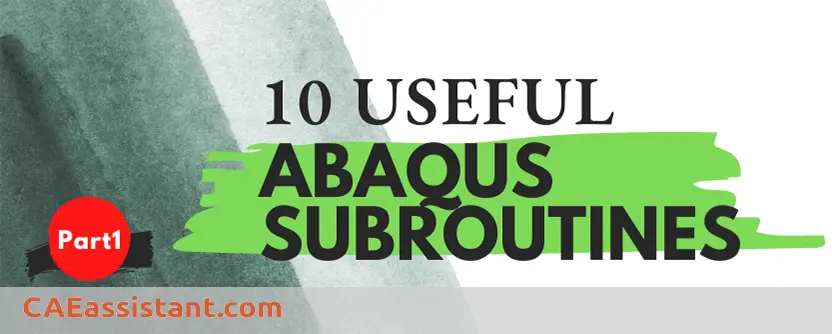

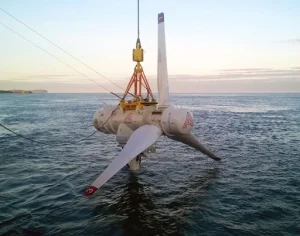

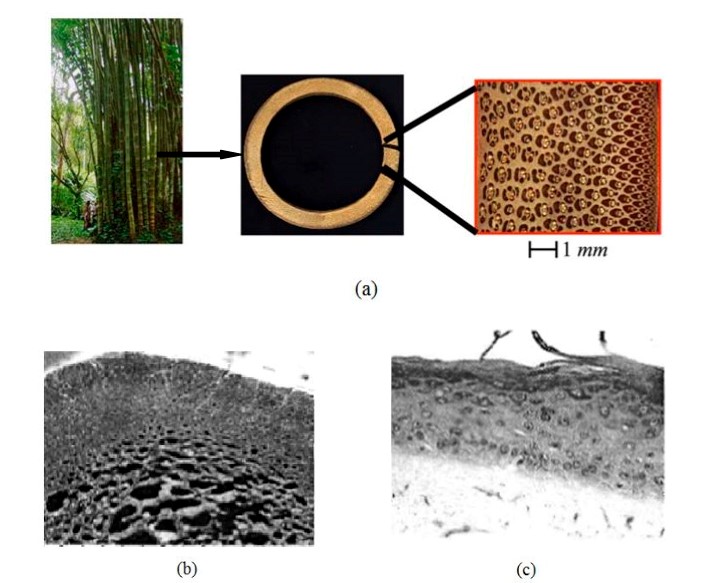
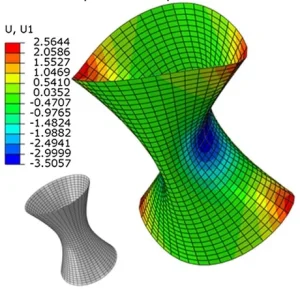

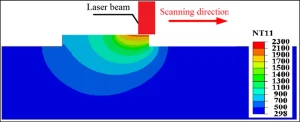
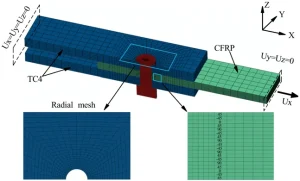
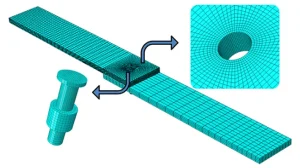
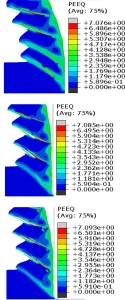

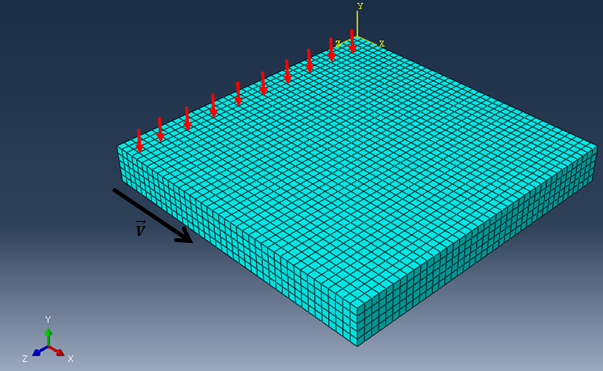
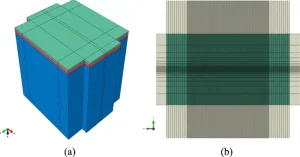

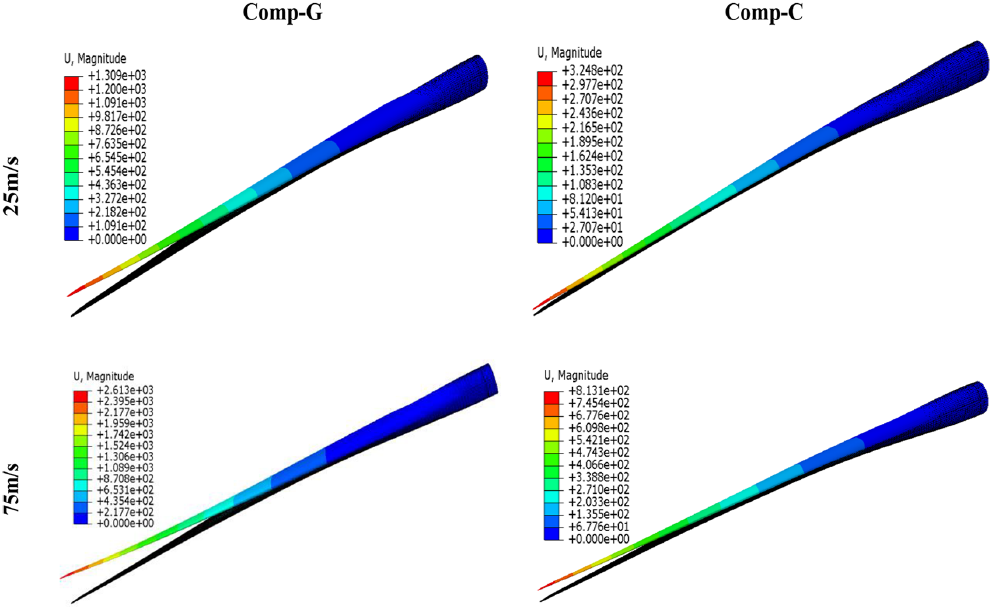



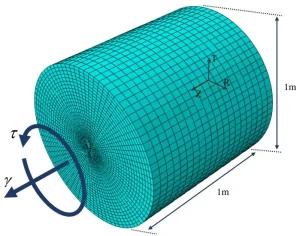
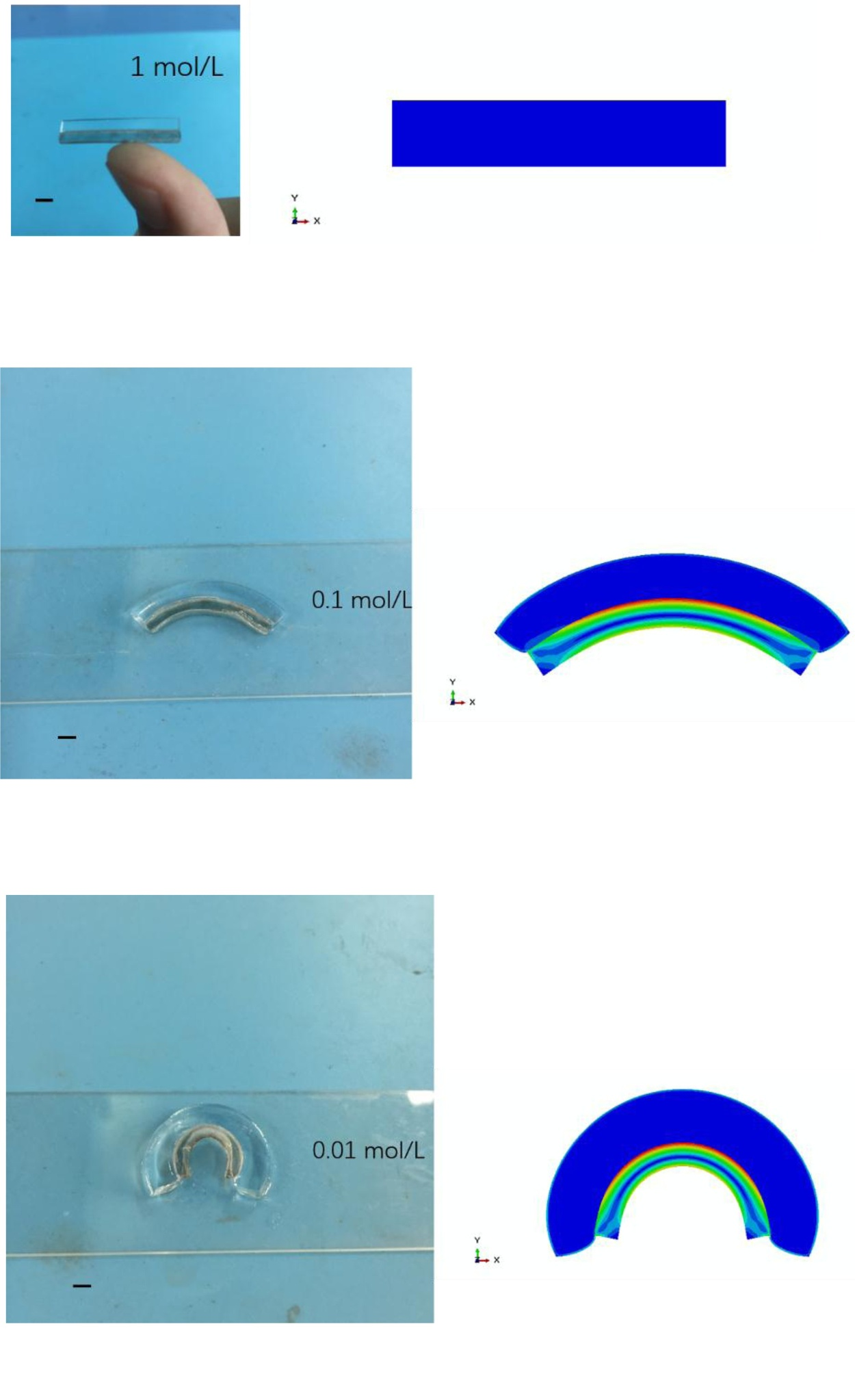


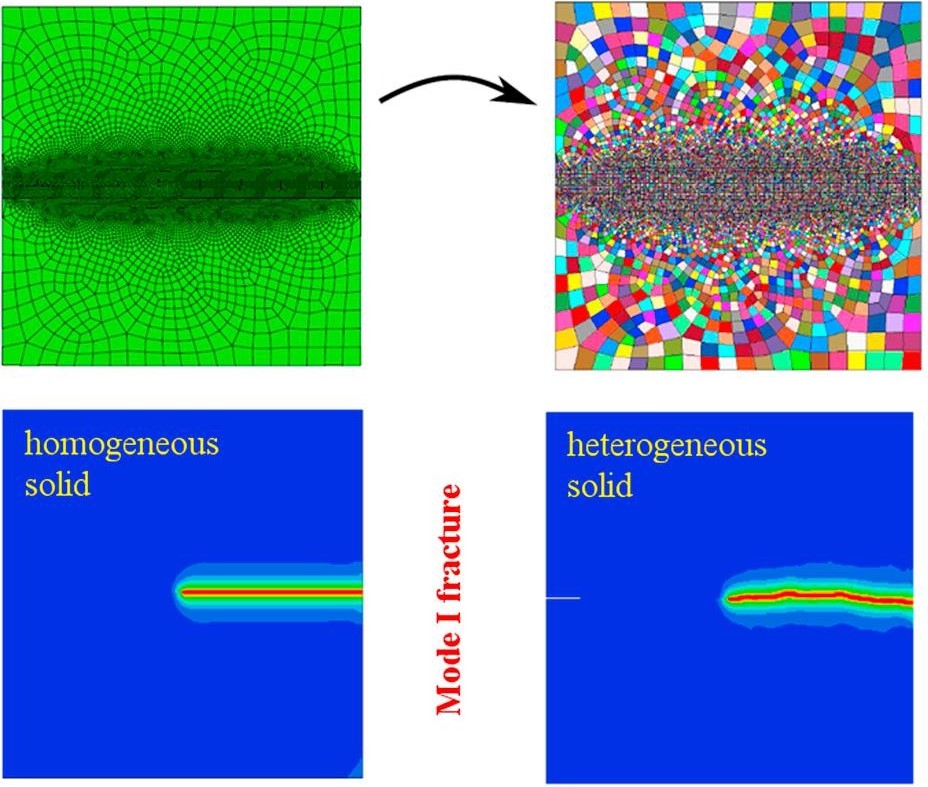
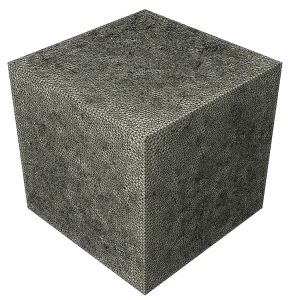
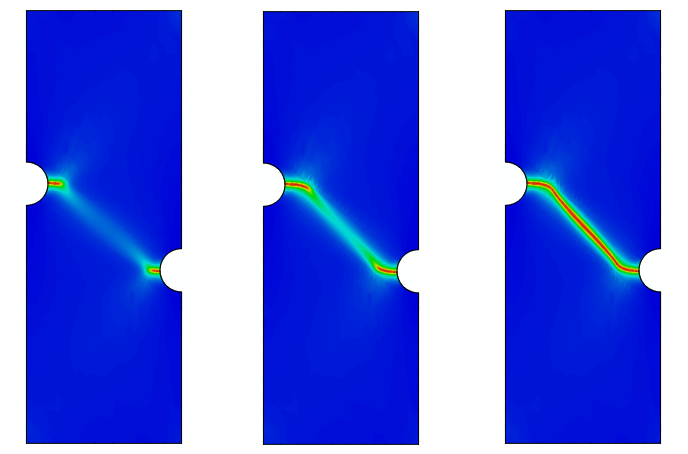

Hi!
Which tutorial package I should buy for conducting research on the following topic:
NiTi, Electroactive polymer, PVDF, Poly (methyl methacrylate) (PMMA), SME in hydrogel
Acoustic and Auxetic Metamaterials
Lattice structure analysis.
Please help me to know so that I can buy them.
I can tell it is one of the good subroutine tutorial article for beginners. What package do you recommend me?